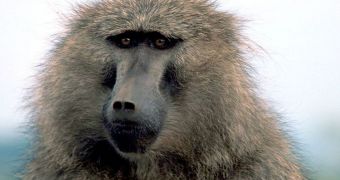One of the critical evolutionary steps in the history of early anthropoids has recently been understood, after researchers uncovered the fossilized remains of an ancient primate, in Myanmar. Anthropoids include humans, apes and monkeys, so the finding sheds some light on our evolutionary history as well.
The species, called Afrasia djijidae, was uncovered by an international team of researchers. Details of the finding appear in the June 4 issue of the esteemed journal Proceedings of the National Academy of Sciences (PNAS), e! Science News reports.
A. djijidae, which was found to have lived some 37 million years ago, is relatively similar to another species, called Afrotarsius libycus, a fossil of which was discovered in the Libyan portion of the Sahara Desert, and determined to have lived around the same time.
What these discoveries suggest is that earliest anthropoids occupied Asia soon after they appeared, which represented a critically important step in the original evolution of more advanced species, including primates and humans.
Previous studies had established that anthropoids developed in Africa, but recent discoveries made in Asian countries such as China and Myanmar are overthrowing this theory. They suggest that Asia may have been the point of origin for these animals.
“Not only does Afrasia help seal the case that anthropoids first evolved in Asia, it also tells us when our anthropoid ancestors first made their way to Africa, where they continued to evolve into apes and humans,” scientist Chris Beard explains.
“Afrasia is a game-changer because for the first time it signals when our distant ancestors initially colonized Africa. If this ancient migration had never taken place, we wouldn't be here talking about it,” says the team member, who is a paleontologist at the Carnegie Museum of Natural History.
The research group includes investigators from Thailand, France and Myanmar. Beard is a world-renowned expert on anthropoid origins and primate evolution. He says that one of the most remarkable findings in the study is that the teeth of Afrasia are very similar to those of Afrotarsius libycus.
The creatures weighed around 3.5 ounces (100 grams), were about the size of a tarsier, and mostly ate insects. “The fact that such similar anthropoids lived at the same time in Myanmar and Libya suggests that the gap in early African anthropoid evolution is actually real,” Jean-Jaques Jaeger adds.
“Anthropoids didn't arrive in Africa until right before we find their fossils in Libya,” concludes the expert, the leader of the research group, and a professor at the University of Poitiers, in France.

 14 DAY TRIAL //
14 DAY TRIAL //